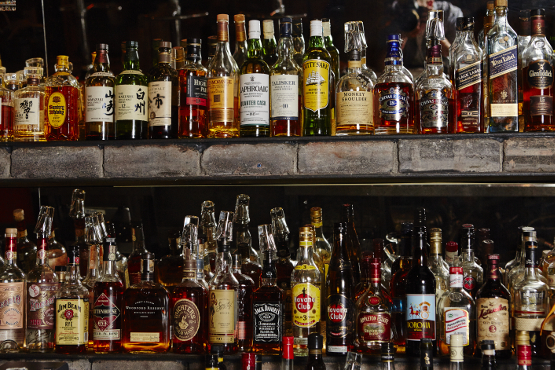There are a lot on misconceptions about blended whisky out there. We talk to the experts to sort out just what a blended whisky is, and why the single malt snobbery is unwarranted. Part 2 in our series.
CONSUMER & TRADE MISUNDERSTANDINGS
There is a certain level of snobbery that comes with the territory in whisky, and according to Woolley a lot of that has trickled down from the “single malt geeks” stoking the blend vs malts debate. However, he says that it is totally unnecessary.
“One isn’t better than the other, they’re just different,” he says. “Neither could survive without the other, as blends account for more than 90 per cent of the whisky sales in the Scotch industry.”
In that regard, the premiumisation of the market has a lot to answer for.
“Everyone wants to be a connoisseur,” says MacDonald. “There is also a bit of machoism that exists as the bolder, more robust flavours are typically found in malts, making them considered more of a ‘connoisseurs’ drink.”
She also notes that price snobbery is misguided as, by its very nature, grain whisky is cheaper to produce in larger quantities, meaning that price tag alone cannot denote quality.
“In some countries, like Australia, where standard blends were more prevalent, the image of blends was as a cheaper – and rougher – alternative to malts,” she says. “After all, single malts were double or triple the price, and then some, so it was a fair assumption to make. However, these young, grain-heavy whiskies were nothing like some of the well-aged and beautifully crafted luxury
blends on the market which play in a different ball game.”
Thankfully, there is a growing level of education in Australia, especially in the consumer sphere.
“I think the understanding has evolved since I started bartending 10 years ago,” says Hanzlicek. “Consumers used to be all about single malts with high age statements, but I have certainly noticed that many consumers are really starting to appreciate non-age statement and blended whiskies.”
CONSISTENCY IS KEY
The skill of the master blender and his team is integral to maintaining the quality and consistency of each and every bottle.
“Master blenders will have learned their craft over years and years, developing an encyclopaedic knowledge of the intricate flavours and characters that Scotch can have,” says MacDonald. “It is an extremely skilled and complex job.”
She gives the example of Colin Scott. The Chivas Regal master blender can “nose” up to 2000 whiskies in any one week to make sure every drop is of the correct quality – of that 2000, only around four will actually be tasted.
“The nose is the secret weapon of the blending team,” she says. “Hundreds more flavours can be picked up on the nose compared with the palate.”
Hanzlicek relates that the master blenders for Suntory devote their lives to their craft, sometimes in an extreme manner.
“The team of master blenders at Suntory try to preserve the integrity of their palate by avoiding spicy foods, not smoking, and not drinking heavily, even though they are evaluating around 200 cask strength whiskies in any one day,” he says.
THE MILLION DOLLAR QUESTION
So, can blends be as good, or better, than single malts?
Woolley: One isn’t better than the other. They’re both different whiskies. It’s like comparing a shiraz-cabernet sauvignon blend to a pinot noir and asking which one is the better wine. They are both wines, but completely different.
MacDonald: Absolutely. A lot of the most expensive whiskies available are blends. Some are sold for over $200,000 a bottle, and include some of the rarest and most precious whiskies that exist. Many luxury blends come from a long history of master blenders whose skills are incredibly valuable and handed down through generations to maintain the integrity of some of the most famous brands.
Hanzlicek: Definitely. While blended whiskies have different characteristics to a single malt, at the end of the day the blended whisky is still created using high quality single malts. It is up to the skills of the master blenders creating these whiskies and many of these guys are truly masters. They have amazingly sharp palates and olfactory sense and many devote their lives to crafting these balanced and complex whiskies.

